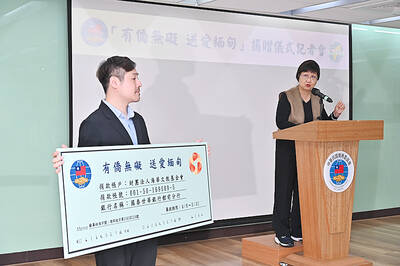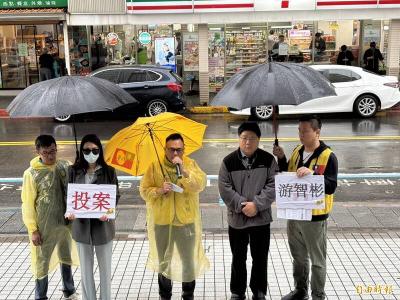Raytheon has signed a US$685.7 million Foreign Military Sales (FMS) contract to provide two additional new fire units of the combat-proven Patriot Air and Missile Defense System for Taiwan, the company announced.
In a press release last week, the defense contractor said the fire units would feature new advanced technology, improved man-machine interface and reduced life cycle costs.
In 2008, Raytheon was awarded a contract to upgrade Taiwan’s existing Patriot Advanced Capability-2 (PAC-2) systems, followed by a second one in 2009 for new systems. The first PAC-3 upgraded radar system was delivered to Taiwan earlier this year, 10 months ahead of the original program plan requested by the Taiwanese Air Force.
The new fire units are part of the US$6.4 billion arms package agreed by the administration of US President Barack Obama in January last year.
In addition to the two fire units, one training unit and 114 PAC-3 missiles were included in last year's package. This month’s FMS does not include missiles, which are manufactured by Lockheed Martin Corp.
The two batteries are to complete a total of six PAC-3 defense systems. The first four are to be delivered by 2014 or 2015.
“Raytheon’s excellent performance for this customer on current and past contracts continues to drive trust, as we deliver superior technology and support for Taiwan’s protection,” Sanjay Kapoor, vice president for Integrated Air and Missile Defense at Raytheon’s Integrated Defense Systems business, said in the press release.
Reports in Chinese-language media in August had claimed that Taiwan’s efforts to procure the two additional PAC-3 air defense batteries were being jeopardized by political bickering and a lack of funds, and that failure to conclude a Letter of Acceptance by the end of this month could result in Taiwan paying much more than the price option listed for the units in last year’s notification.
However, a representative for Raytheon at the time told the Taipei Times that negotiations were on track.
Taiwan’s Patriot missile batteries are deployed around Taipei, Greater Taichung and Greater Kaohsiung.

DEFENSE: The National Security Bureau promised to expand communication and intelligence cooperation with global partners and enhance its strategic analytical skills China has not only increased military exercises and “gray zone” tactics against Taiwan this year, but also continues to recruit military personnel for espionage, the National Security Bureau (NSB) said yesterday in a report to the Legislative Yuan. The bureau submitted the report ahead of NSB Director-General Tsai Ming-yen’s (蔡明彥) appearance before the Foreign and National Defense Committee today. Last year, the Chinese People’s Liberation Army (PLA) conducted “Joint Sword-2024A and B” military exercises targeting Taiwan and carried out 40 combat readiness patrols, the bureau said. In addition, Chinese military aircraft entered Taiwan’s airspace 3,070 times last year, up about

A magnitude 4.3 earthquake struck eastern Taiwan's Hualien County at 8:31am today, according to the Central Weather Administration (CWA). The epicenter of the temblor was located in Hualien County, about 70.3 kilometers south southwest of Hualien County Hall, at a depth of 23.2km, according to the administration. There were no immediate reports of damage resulting from the quake. The earthquake's intensity, which gauges the actual effect of a temblor, was highest in Taitung County, where it measured 3 on Taiwan's 7-tier intensity scale. The quake also measured an intensity of 2 in Hualien and Nantou counties, the CWA said.

The Overseas Community Affairs Council (OCAC) yesterday announced a fundraising campaign to support survivors of the magnitude 7.7 earthquake that struck Myanmar on March 28, with two prayer events scheduled in Taipei and Taichung later this week. “While initial rescue operations have concluded [in Myanmar], many survivors are now facing increasingly difficult living conditions,” OCAC Minister Hsu Chia-ching (徐佳青) told a news conference in Taipei. The fundraising campaign, which runs through May 31, is focused on supporting the reconstruction of damaged overseas compatriot schools, assisting students from Myanmar in Taiwan, and providing essential items, such as drinking water, food and medical supplies,

New Party Deputy Secretary-General You Chih-pin (游智彬) this morning went to the National Immigration Agency (NIA) to “turn himself in” after being notified that he had failed to provide proof of having renounced his Chinese household registration. He was one of more than 10,000 naturalized Taiwanese citizens from China who were informed by the NIA that their Taiwanese citizenship might be revoked if they fail to provide the proof in three months, people familiar with the matter said. You said he has proof that he had renounced his Chinese household registration and demanded the NIA provide proof that he still had Chinese